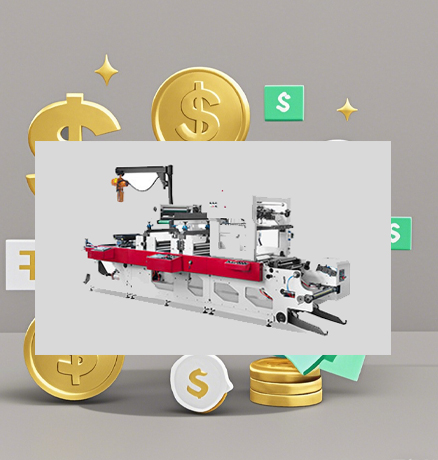In the world of label processing, Label Folding Machines play a crucial role. Understanding their parameters and pricing is essential for businesses to make informed decisions and optimize their label production processes. Let's explore the details of these machines.

I. Parameters
Folding methods
(1)Folding in half: This is a relatively common folding method where the label is folded in half along the center line. It is suitable for some simple label folding needs, such as ordinary product information labels. The machine structure of this folding method is relatively simple, easy to operate, and can quickly and accurately complete the folding operation, ensuring the flatness and consistency of the folding.
(2)Multiple folds: The label can be folded into multiple sections according to needs, such as three folds or four folds. It is suitable for situations where there is a lot of information on the label and folding is needed to better display or facilitate storage. Label folding machines with multiple folds usually require more complex mechanical structures and control systems to ensure the accuracy of the position and angle of each fold.
(3)Folding speed: This is an important parameter for measuring the working efficiency of label folding machines. Generally speaking, ordinary label folding machines can fold dozens to hundreds of labels per minute. High-speed label folding machines can reach a folding speed of thousands of labels per minute, which is suitable for large-scale production scenarios. The folding speed is also affected by factors such as the size and material of the label and the stability of the machine.
(4)Applicable label sizes: Different label folding machines have different ranges of applicable label sizes. Common label sizes include small labels such as 20mm x 30mm, 30mm x 50mm, etc., which are suitable for the packaging or labeling of small products. Medium-sized label sizes are roughly around 50mm x 80mm, 80mm x 100mm, etc., and can be used for labels of general commodities. Large label sizes may exceed 100mm x 150mm and are often used for the labeling of large equipment and packaging boxes. The tracks, conveying devices, and folding components of the machine need to be designed and adjusted according to the label size to ensure that the label can be folded smoothly.
Precision control
(1)Position precision: Refers to the accuracy of the label folding position. The smaller the error, the higher the position precision. High-precision label folding machines can control the error of the folding position within millimeters to ensure that the shape and size of the folded label meet the design requirements. This is very important for industries with high requirements for label folding precision, such as the electronics and pharmaceutical products industries.
(2)Angle precision: That is, the accuracy of the label folding angle. For example, a folding-in-half label folding machine needs to ensure that the angle between the two parts after folding is close to 180°. Label folding machines with multiple folds need to ensure that each folding angle meets the set requirements. The control of angle precision depends on the mechanical structure design of the machine and the precision of the control system.
Feeding methods
(1)Manual feeding: This feeding method requires manually placing the label into the machine's feeding port. It is suitable for small batches and occasional label folding work. Label folding machines with manual feeding have a simple structure and low price, but the work efficiency is low, and the requirements for operators are high. It is necessary to ensure that the position and direction of each feeding are correct.
(2)Automatic feeding: Labels are automatically conveyed to the folding position through devices such as conveyor belts and rollers, greatly improving work efficiency and reducing the errors and labor intensity of manual operation. Label folding machines with automatic feeding are suitable for large-scale and continuous production operations and can achieve high-speed and stable label folding.
II. Pricing
Low price range: Some relatively simple manual or semi-automatic label folding machines may cost from a few hundred dollars to several thousand dollars. These machines have relatively single functions and slow folding speeds, and are suitable for small-scale label folding needs of small enterprises or individual users. For example, some small desktop label folding machines mainly used for label folding work in offices and small stores may cost around a few hundred dollars.
Medium price range: Medium-priced label folding machines usually cost between several thousand dollars and more than ten thousand dollars. This type of machine generally has a higher degree of automation and better folding precision and can meet the production needs of medium-sized enterprises. For example, some label folding machines with automatic feeding, multiple folding methods to choose from, and faster folding speeds may cost between several thousand dollars and ten thousand dollars.
High price range: High-end label folding machines may cost tens of thousands of dollars or even more. These machines usually have advanced technologies and high-performance configurations, such as high-speed folding, high-precision control, and intelligent operating systems. They are suitable for large enterprises or industries with extremely high requirements for label folding quality and efficiency, such as electronics, pharmaceuticals, and food. For example, some fully automatic high-speed label folding machines that can achieve a folding speed of thousands of labels per minute and have a high degree of automation and intelligence may cost tens of thousands of dollars or more.
In general, the parameters and pricing of Label Folding Machines will vary depending on factors such as the machine's functions, performance, and degree of automation. Users need to comprehensively consider their actual needs and budgets when choosing.
GET A QUOTE